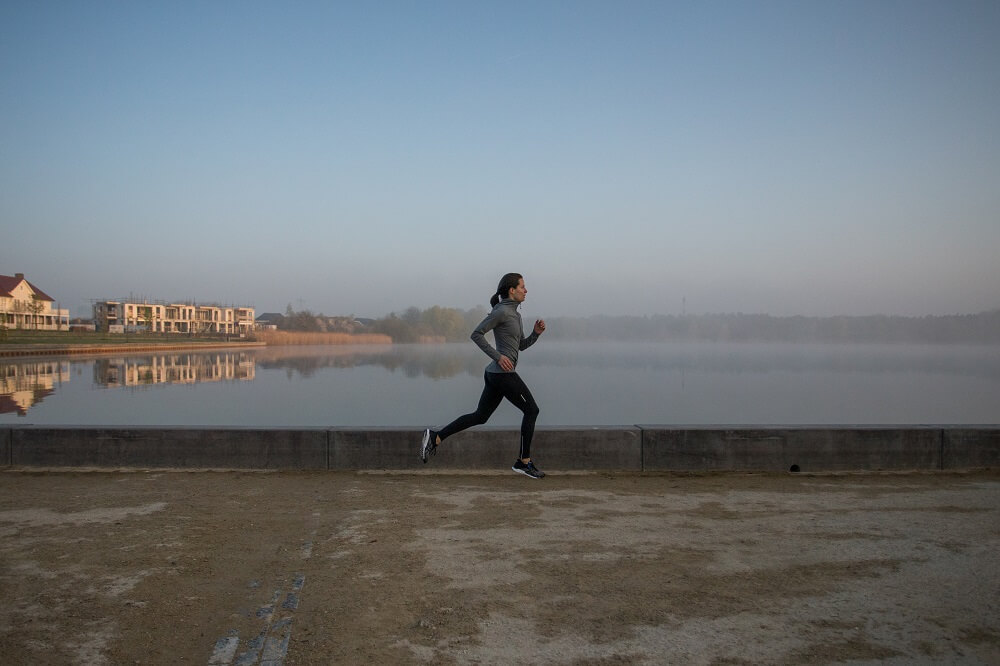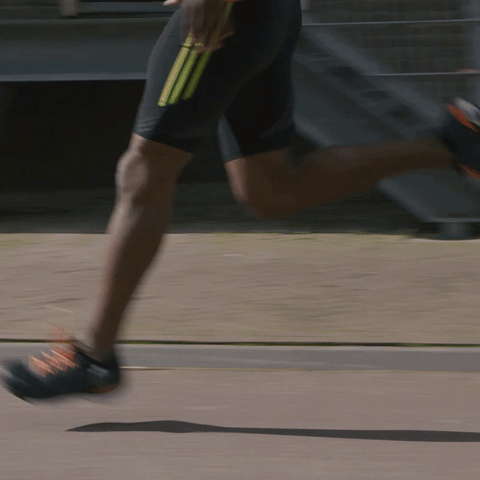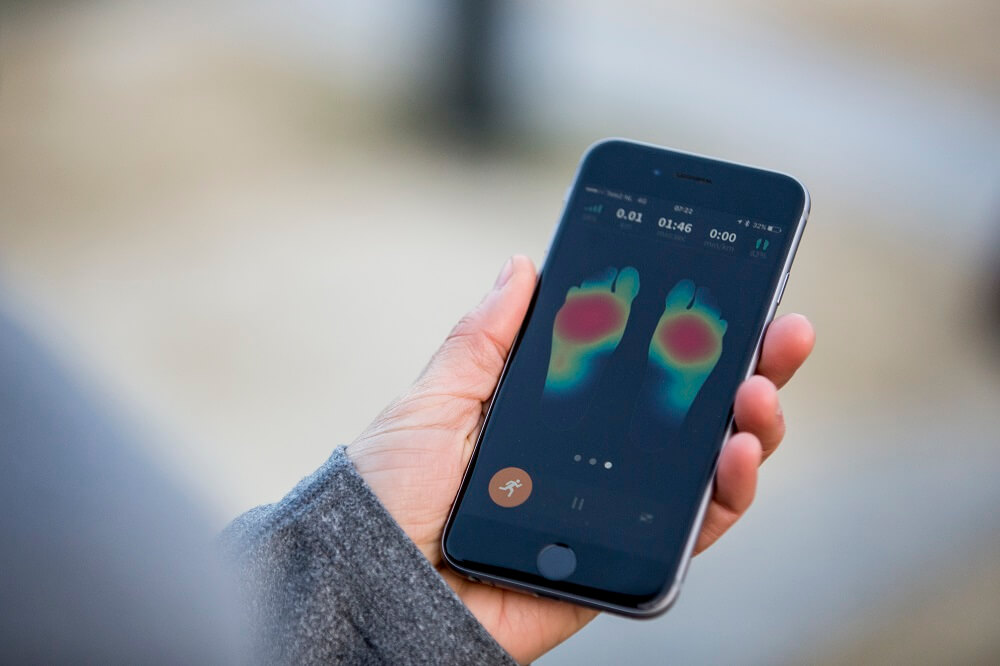Footstrike is often a popular topic in the running community. Many people have strong opinions on what’s best. While heel strike is by far the most used, some suggest a forefoot or midfoot strike is better. Others even suggest it doesn’t matter at all. Let’s discuss what research says about this aspect of your running technique.
What is the best footstrike to run with? Perhaps a better question; what is the best footstrike for me? Whilst many scientific publications refer to footstrike or strike index, there is no clear agreement on what’s the best. In elite competition there are also plenty of examples of all forms of footstrike. All of which appear to point towards the idea that footstrike alone is not a good predictor of running performance. However, we shouldn’t forget footstrike completely. It can still be a very important parameter to be aware of, especially when it comes to injury risks.

Footstrike is a very important parameter to be aware of when it comes to injury risks
Barefoot running technique
Footstrike received a lot of attention in 2009/2010 with a barefoot revolution resulting from research and a book published around this time. The research showed that runners adopted a very different footstrike when running with or without shoes. The impact of this in the running community stimulated numerous shoe manufactures to introduce minimalistic and zero drop shoes to the market.
With barefoot running it is common that a more mid- to forefoot strike is embraced. The theory behind this is that when running barefoot it would simply be too painful to land on the heel. People will naturally try to avoid pain, inherently leading them to land more towards the mid- and forefoot region.
The enhanced feeling and awareness of how your body is orientated is referred to as proprioception. It’s an important element of learning and optimizing how you use your body. More on that in a future blog post. For now we will focus on the footstrike itself.
Injury risks related to footstrike
Some research papers suggest that the impact on your body is better distributed when adopting a barefoot running technique. Other work suggests that footstrike is not the only factor influencing load distribution. Parameters such as stride length, cadence and other factors all influence the result. Importantly the injury rates for different foot strikers appear to be rather comparable according to the available reported data.
This information might appear to conceal the importance of footstrike as an element of your running technique. However, when we get more specific the effects start to become clearer and can be very useful for your choice of running technique.
The effects of different footstrikes
One thing to be aware of is the windlass mechanism. This is the combined structure of the planta-fascia bundle, the Achilles tendon and the calf muscles. Your footstrike can influence how strongly this mechanism is activated. It can be important for the stability of the foot and the distribution of load across multiple structures, dispersing the energy felt by each joint.

When we land on the fore- or midfoot regions, the structures of the foot and lower leg are more engaged and can store elastic energy. This makes a forefoot strike rather interesting for sprint distances where performance should be very explosive.
For distance runners footstrike doesn’t seem to have a clear influence on overall injury rate or performance.It does however help us understand where we are most likely to experience pain and injuries:
- Forefoot strikers are more likely to experience lower leg injuries, such as in the foot, achilles tendon and calf muscles
- Heel strikers are more likely to experience knee and hip pain
This information can be very valuable for those of us that have consistently experienced the same problems time and time again.
What is the best footstrike for you?
So after all of this information, you might be wondering what the best footstrike is? Simple answer is; there is no single best footstrike for everyone. The first step to understanding your footstrike is to recall where you most commonly feel discomfort, pain or injuries. Once you have established this, you might consider making small changes to avoid these issues in the future.
Before you do, there is one additional and very important factor to consider. Changing footstrike too quickly and radically can increase your risk of injury. So rather than creating a solution, you might even be creating a new problem. The theory behind this is that the body has adapted over time to your existing running technique. A radical change places load and stress on the body in a way that it is simply not prepared for, potentially resulting in pain and injury. A general rule of thumb is to make small and gradual changes towards your target. This allows your body time to adapt and change to this new way of running, helping you to reduce the risk of pain and injury.
Keep in mind that running technique is a skill with many factors coming together that ultimately determine your injury risk and performance. We always recommend you search guidance when adapting your running technique. Of course we hope that you choose ARION to help you overcome this challenge and improve your running technique.

When running with ARION you can review your runs and your footstrike step by step
As always there’s so much more to tell. Do you have questions that we can answer in a future blog post? Simply leave a comment and we’ll see how we can help.


Hi Andy… Very well written and informative article.
Every time an elite runner makes his way onto the world running circuit, say e.g. Usain Bolt, people start comparing their technique with that of the fastest running animals such as cheetah. There are of course obvious differences in the bio-dynamics, however, can you describe or explain any similarities humans have with other mammals when it comes to running techniques? It can also probably be related to the footstrike.
I recently have an injury called a Turf Toe, an overstretched big toe. I have orderd the Arion with two pods. I have read the article about the best footstrike. Normay I am a forefoot striker, so that explains my injury for 100%. What training exercise would you recommend for me for the next 6 months, to reduce the pain from the Turf toe injury?
Hey Nick,
Thank you for your question! My apologies for the late response. Our blog is quite new and somehow we missed the comment notification.
Turf toe is a tricky one, I’m sorry to hear that you are struggling with it. It’s certainly a good idea to talk with your physio or health professional for proper advice, but for sprains like this RICE (Rest Ice Compression and Elevation) is standard way many people will use to help recovery. Rest I think we can all understand. Ice refers to cooling the joint to reduce inflammation, by icing for a couple of minutes then letting the joint warm for a couple of minutes and repeating this for a period of 15 to 20 mins it might be possible to encourage better blood flow. Of course anyone icing should be careful to avoid direct skin contact, it’s cooling not freezing! Compression can refer to supporting or bandaging, for turf toe (depending on which toe it is) it might be worth strapping the toe to a supporting toe, but do check how to do this properly with a professional before you start to bind your feet up. Elevation basically means getting your feet up, let the joint drain and experience less pressure from blood rushing down the legs. Most importantly as a general rule of thumb don’t try doing too much too soon, build up slowly working with controlled loading and range of motion to begin with once your are on the road to recovery.
Best of luck with this. I know it can be a difficult task to rest, but I do hope you are back in your running shoes soon!
Kind regards,
Andrew Statham